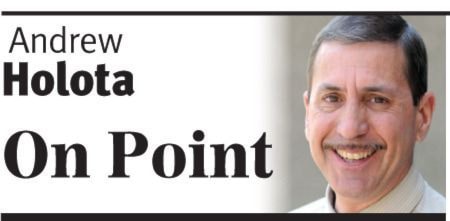When it comes to police use of force, the armchair experts come out in full force.
Such is the case in the aftermath of last Wednesday’s incident involving the Abbotsford Police Department and a report of a distraught homeless man waving a knife and yelling outside the Abbotsford Food Bank.
Employees inside the facility made the call, and then followed protocol by locking the building, and waiting for police. Clearly, they had reason for concern.
The man was in the parking lot, and would not follow repeated police commands to lie down. Ultimately, officers shot him several times with non-lethal rounds – rubber bullets and beanbags.
The man was arrested and taken to hospital for examination of minor injuries, and to undergo a mental health assessment.
At the scene, on the pavement beside the man’s backpack, was a large knife.
Roy Roberts, 57, has been charged with possessing a weapon for a dangerous purpose and has been in custody since his release from hospital.
A potentially dangerous situation effectively defused by the cops, with no serious injuries. All good, right?
Not according to a local homeless advocate, and some viewers of a citizen’s YouTube video taken during part of the takedown.
Based on that, and a hefty application of after-the-partial-facts analysis, the police used excessive force, allege the critics.
The man didn’t have a knife in his hands when he was taken down. Ipso facto, he was not a threat, and the excessive force allegation is proven, case closed – save for condemnation and righteous indignation.
There isn’t video of the entire episode from start to finish. That means we don’t know what the people at the food bank saw. But their report was of a man waving a knife.
I’m not a cop, but I’ll make a wild guess that 911 call automatically sets police response to a high level of caution and protocol of action. Upon arrival, officers are potentially dealing with an armed individual. They act accordingly, which is to contain the situation, take control, and in the process, protect all concerned, including – as much as circumstances allow – the suspect.
In this case, there clearly was no compliance with police orders.
Call in the couch critics at this point, who handily freeze-frame the action. They call in an instantly available mental health worker. They have a friendly chat with the fellow. They bring him a French vanilla coffee (that was a real suggestion). They determine the knife was just a little one, that he never held anyway. And besides, everybody knows this guy is really harmless. No threat here, folks.
And if there really was a big knife, then it was in his backpack where officers found it.
(Wouldn’t that still make it a big knife?)
This scenario had so much potential to go real bad, real fast. The guy grabs his knife and runs off. He encounters a citizen who is in the wrong place at the wrong time, and who gets fatally stabbed.
Whose fault? The police, of course. Why didn’t they do something?
The man picks up the knife and lunges at officers. Now he’s a deadly threat, and real bullets are used. Police kill a confused homeless man. Public outrage follows.
I’ll suggest what is really outrageous here, and that is the dismal failure of our social support system to deal with the mentally ill – particularly those on the street.
They don’t fall through the cracks – they live in them.
And when their afflictions put them in conflict with the law, they encounter the police, who are expected to be mind-readers, mental health professionals and social workers – in often extremely tense situations.
The subjects are arrested, maybe charged, and then are rotated by the system back onto the street with little or no long-term treatment.
The real injustice to Roy Roberts is what is going to happen next – or more accurately, what won’t.
